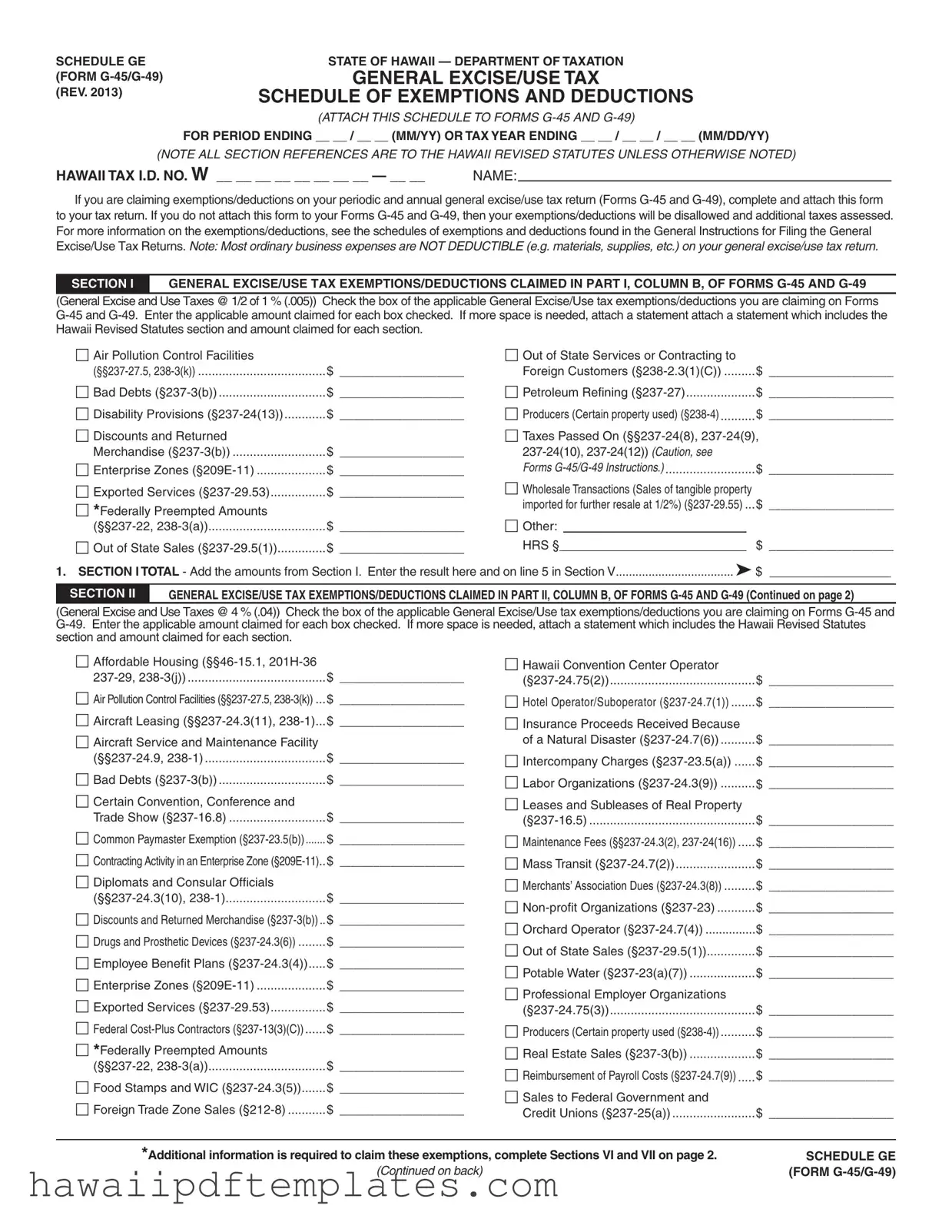G 45 Hawaii PDF Form
The G 45 Hawaii form is a schedule used for reporting general excise and use tax exemptions and deductions. This form must be attached to the G-45 and G-49 tax returns to ensure that claimed exemptions are recognized by the Department of Taxation. Failing to include this form could lead to disallowed deductions and additional taxes owed.
Ready to fill out the G 45 Hawaii form? Click the button below to get started!
Customize Form Online
